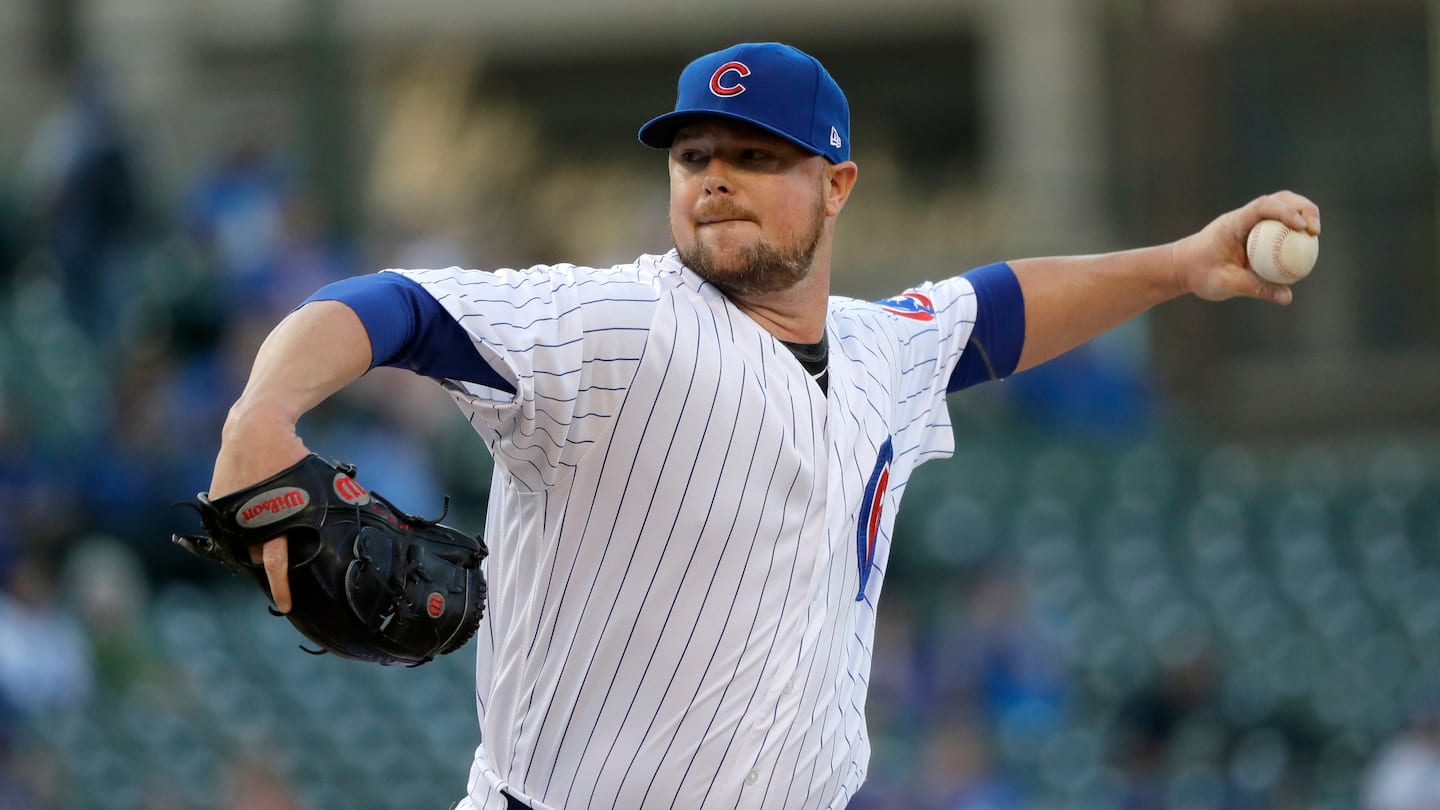Jon Lester, 37, brings a long track record of not missing starts to the Nationals

But the Nationals would like Lester to continue defying baseball’s aging curve. That’s not necessarily a challenge, given his results at 34, then 35 and 36, his age while starting 12 of the Chicago Cubs’ 60 games in 2020. Washington targeted Lester for his ability to complete five innings in most starts. The Nationals needed a fourth starter, and they crave length for whenever Max Scherzer, Stephen Strasburg or Patrick Corbin is resting.
“A lot of it is luck,” Lester said Wednesday of his durability on a video call with reporters. “I just, for whatever reason, have been lucky to stay healthy and the little things that pop up during the season, we’ve been able to minimize them, which always helps. Any time those little things pop and you don’t take care of them, they can turn into some big things later on. So I feel like we’ve stayed on top of that.”
We, for the past six years, meant Lester and the Cubs. Before that, he spent eight seasons with the Boston Red Sox, who traded him to the Oakland Athletics in 2014, a quick stop ahead of his six-year, $155 million contract with Chicago. Lester acknowledged Wednesday that the Cubs made an offer before he agreed to a one-year, $5 million contract with the Nationals on Jan. 18. The deal includes $3 million deferred to 2023, according to a person with knowledge of the terms.
The deal gave Lester a chance to win in the twilight of his career. And, for the Nationals, it brought a reliable arm to the back of a front-heavy rotation.
Lester has made at least 31 starts in every full season since 2008. He’s also pitched 154 postseason innings, divvied between nine Octobers. This winter, after posting a career-high 5.16 ERA, Lester threw a handful of early bullpens to work on flexibility. He typically doesn’t throw until the week before spring training.
“Every year has changed for me as far as what I’m doing to try to stay durable and try to pitch as many starts as I can,” Lester said of his body’s response to the shortened year. “Just cause you get older, things change. You can’t do the things you once did when you were 23, 24.
“But I think going into next season, I think the guys who have done this for a long time, their bodies know what to expect, so I don’t think there’s going to be … I hope there’s no holdbacks.”
The Nationals hope so, too. Lester is familiar with their clubhouse. Manager Dave Martinez was the Cubs’ bench coach for three of Lester’s seasons in Chicago. Jim Hickey, Washington’s new pitching coach, was Lester’s pitching coach with Chicago in 2018. Lester knows Paul Lessard, the Nationals’ director of athletic training, and Greg Barajas, who is on Lessard’s staff. And Kyle Schwarber, their new left fielder, was Lester’s teammate the past six years.
That should make this a very smooth transition. When pressed Wednesday on how he’s stayed sharp in his 30s, Lester laughed and shook his head. He survived a rare form of non-Hodgkin’s lymphoma that was diagnosed when he was 22, just after he broke into the majors. He overcame that challenge, has stayed healthy and adapted in many ways. He credited Jason Varitek, his catcher with the Red Sox, who pushed a young Lester in the same way he pushed veterans. Lester says Varitek drove him to get better at something — at anything — every day they worked together. Lester cited his change-up as an example.
As he aged, and his fastball lost velocity, Lester increased his change-up usage. In 2020, he threw it 13.5 percent of the time, according to FanGraphs, the highest rate of his career. His fastball averaged just above 89 mph, way down from its peak of close to 94 in 2009.
“You have to learn how to get outs. And I think as you get older, and as it gets harder as you get older, you try to make getting outs easier if you can, if that makes sense,” Lester explained. “It’s just an evolving thing, and something I’m learning every day. Last year, I learned a lot about what I could pitch and what I couldn’t pitch with, and how I need to adjust my game plan and attack plan, even though it was such a short season.”
For the Nationals, it mattered that Lester made it through the whole of that season, taking each of his 12 turns. He plans to pepper Scherzer, Strasburg and Corbin with questions, curious about how they approach hitters and have navigated their 30s. He wants to be a teacher and student, seeing there’s more to learn.






